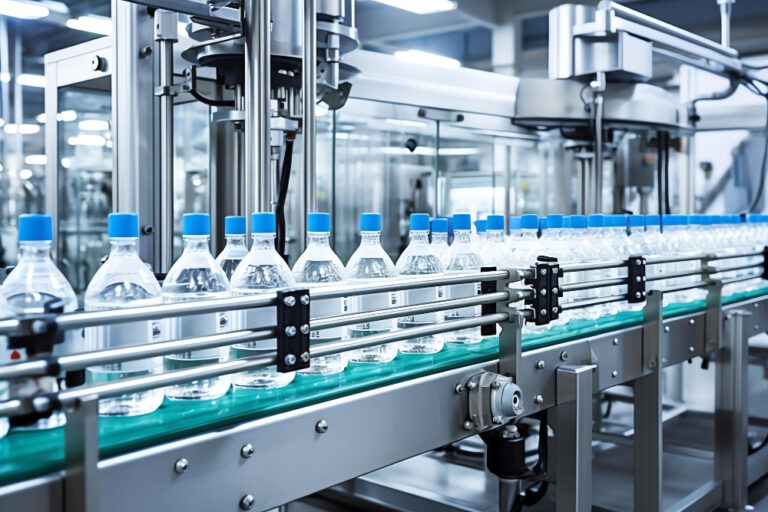Did you know that it is essential for you to monitor air quality within your food processing facility and its surroundings? This is crucial to ensuring that the air does not introduce contamination to your product. Air quality can also impact your product’s sensory quality if the fragrance/odor/volatile aroma in the air migrates into your product. Air can be contaminated with microorganisms, particulate matter like dust, and chemicals like volatile organic compounds and pesticides. Therefore, you must have means of controlling, monitoring, and maintaining the quality of air within your food processing facility.
How do You Monitor the Air?
For you to have control of the quality of air in your food facility, you must test and monitor it. This will help you know how to focus your control method to be efficient and cost-effective. Usually, this will begin with sampling and testing the air. The test method selected will depend on whether you’re testing for microbial load in the air, chemical compounds, or particulate matter. You can use methods such as the gravimetric method and optical particle counter to measure particulate matter in the air in your food facility. The gravimetric approach yields the most precise results.
Several analytical and spectrophotometric methods have been developed to measure chemical contaminants in the air, however, if you prioritize accuracy, sensitivity, and ability to provide detailed information on a wide range of chemical contaminants, your best options will be to make use of a Gas Chromatography-Mass Spectrometry (GC-MS), Photoionization Detectors (PID), or a Fourier Transform Infrared Spectroscopy (FTIR). The technique of choice for monitoring the microbiological quality of air in your food facility might be passive (settling plates) or active (sampling the air using impingers or impactors).
Air Quality Control and Sanitation
Now that you know the various methods you can employ to monitor the quality of air in your food plant, you have vital information that may help you standardize your operations and enhance air quality by making the required changes. How can you improve the air quality in your food facility?
There are three ways that we have identified as being crucial to improving the quality of air within your food processing facility. These are plant design (airflow management), floor drains, and the presence of air scrubbers in strategic zones within your plant.
Plant design – airflow management approach
Your plant’s airflow design can create a clean and safe environment by controlling the movement and direction of air. The first step to achieve this is to divide your plant into zones based on contamination risk (high-risk zone and low-risk zone) using walls, airlocks, or even physical distance. Then you can manipulate the air pressure gradient to create a directional flow that pushes air from clean to dirty areas and prevents contaminated air from migrating into critical processing areas. Another area you can look at is the air changes per hour. Ideally, the exchange rate of air in high-risk zones should be more frequent per hour than in low-risk zones.
Floor drain approach
You might overlook floor drains, but they are significant in maintaining good air quality within your facility’s food processing area. If not designed properly, they can harbor contaminants, becoming a breeding place for bacteria, mold, and other microorganisms due to stagnant water and food debris. This can ultimately contribute to biofilm formation, releasing harmful spores and volatile organic compounds into the air. You can improve air quality by ensuring floor drains have a self-draining design with proper slopes to prevent water accumulation. They should be designed using smooth, non-porous surfaces that are easy to clean and disinfect, and with effective P-traps or other mechanisms to prevent sewer gases and odors.
Using air scrubbers in strategic zones
Air scrubbing is a good way to remove contaminants from a stream of air and keep air clean. You can use air scrubbers to remove particulate matter, chemical contaminants, and biological contaminants. For example, installing High-Efficiency Particulate Air (HEPA) filters in ventilation systems, especially in critical areas like packaging lines to capture fine particles, including bacteria and mold spores, you can also use carbon filters for the removal of volatile organic compounds, and air ionization technologies to disinfect the air by killing airborne bacteria and viruses.
Have you thought about how to improve the air quality in your food facility? Do you think you need experts’ opinions on deciding the best options that are available to you? Consult with Fresh Group today. Let’s build a safe food system for your food products together!
FSQ Writer: Oluwatobi Eniyandunmo
Reviewed by: Raphael Samson
Reach out to Fresh Group Food Safety And Quality Consulting for any inquiries related to food quality and safety.




